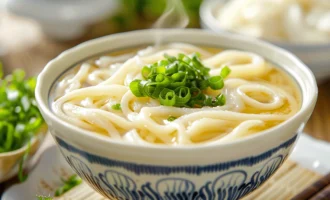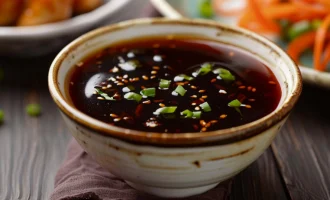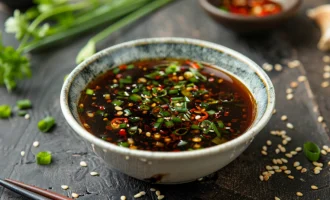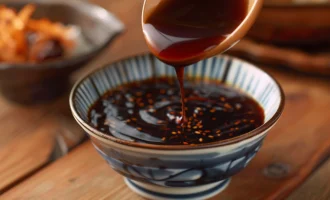Ingredients
- 50g soy sauce
- 30g kecap manis (sweet soy sauce)
- 20g oyster sauce
- 15g tomato ketchup
- 10g sambal oelek (Indonesian chili paste)
- 5g palm sugar
- 5g garlic, minced
- 5g shallots, minced
- 3g ginger, minced
- 2g ground black pepper
- 2g vegetable oil
Per serving
Calories: 150 kcal
Proteins: 2 g
Fats: 10 g
Carbohydrates: 15 g
Method
-
In a small bowl, combine the soy sauce, kecap manis, oyster sauce, tomato ketchup, sambal oelek, palm sugar, and ground black pepper. Mix well until the sugar is dissolved. Set aside.
-
Heat the vegetable oil in a pan over medium heat. Add the minced garlic, shallots, and ginger. Saute until fragrant and slightly golden brown.
-
Pour the prepared sauce mixture into the pan. Stir-fry for a minute or two until the sauce thickens slightly and coats the ingredients evenly.
-
Taste the sauce and adjust the seasoning if needed. You can add more soy sauce, kecap manis, or sambal oelek according to your preference.
-
Remove the pan from the heat and let the sauce cool down to room temperature.
-
Once the sauce has cooled, transfer it to an airtight container and refrigerate until ready to use.
The Indonesian nasi goreng sauce is traditionally served with nasi goreng, which is a fried rice dish. It is a popular street food in Indonesia and is often topped with a fried egg, crispy shallots, and fresh cucumber slices.
In conclusion, the Indonesian nasi goreng sauce is a flavorful brown sauce that combines the richness of soy sauce, sweetness from kecap manis, and a hint of heat from sambal oelek. It adds a delicious umami flavor to nasi goreng and enhances the overall taste of the dish.
Facts about the sauce:
- Nasi goreng is a staple dish in Indonesian cuisine and the sauce plays a vital role in its flavor profile.
- The combination of soy sauce, kecap manis, and oyster sauce gives the sauce its savory and sweet notes.
- Sambal oelek, a popular chili paste in Indonesian cuisine, adds a spicy kick to the sauce.
- The sauce can be customized by adjusting the amount of chili paste or sweet soy sauce to suit personal taste preferences.
- The sauce can be used as a marinade for meat or seafood dishes, or as a dipping sauce for spring rolls or dumplings.







